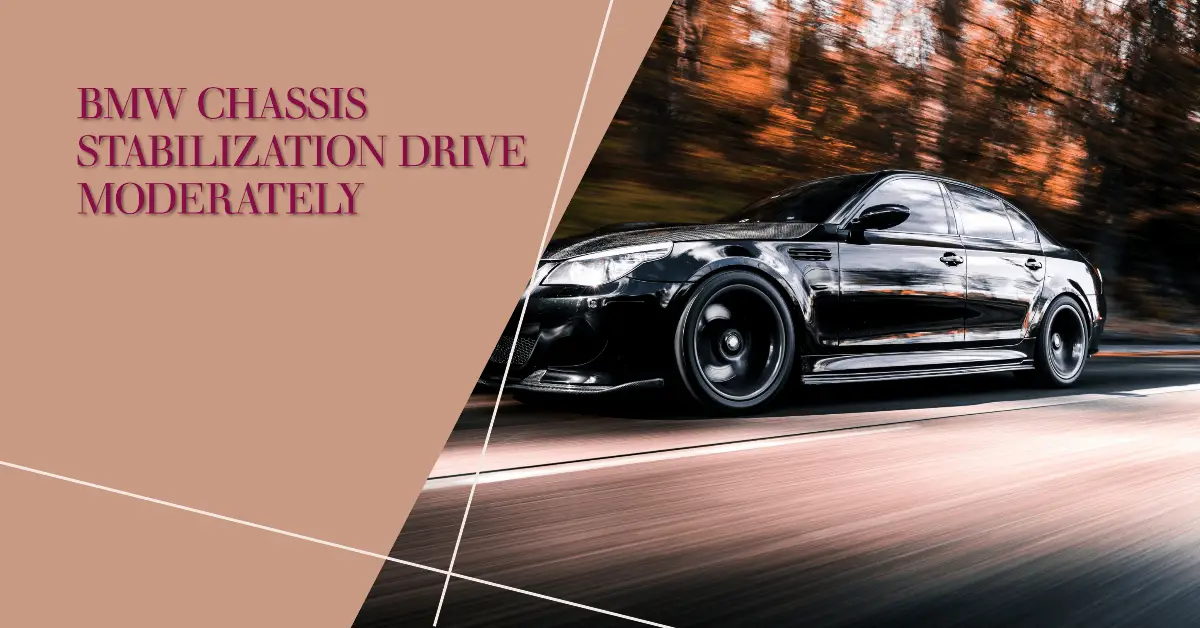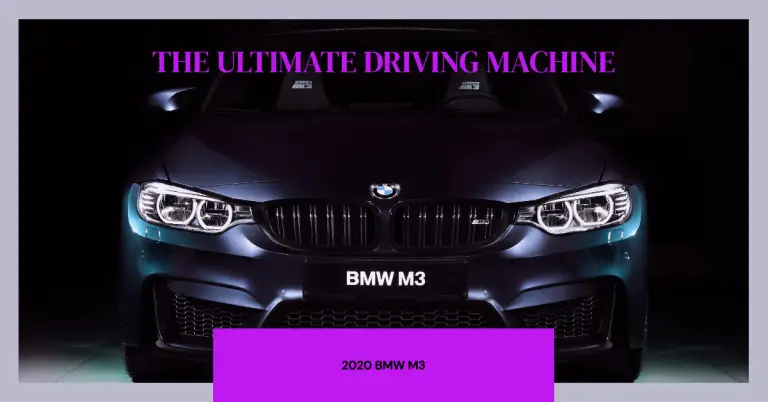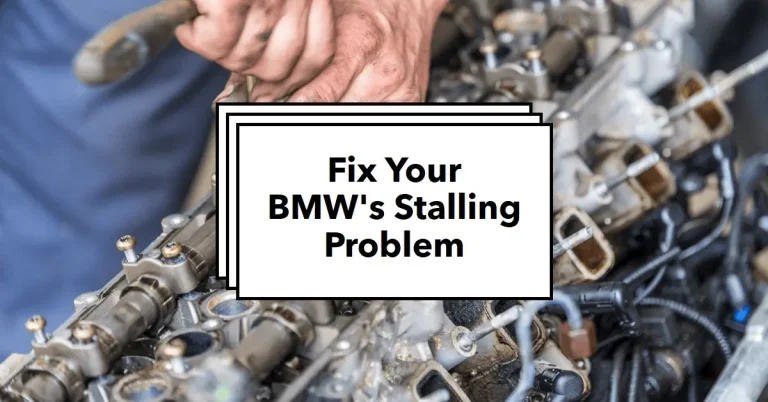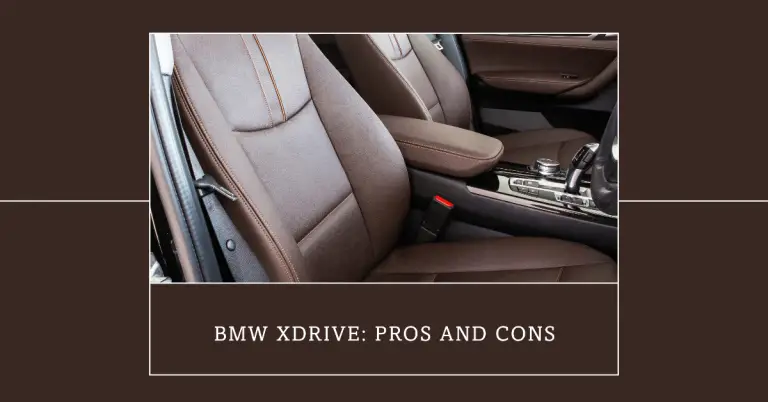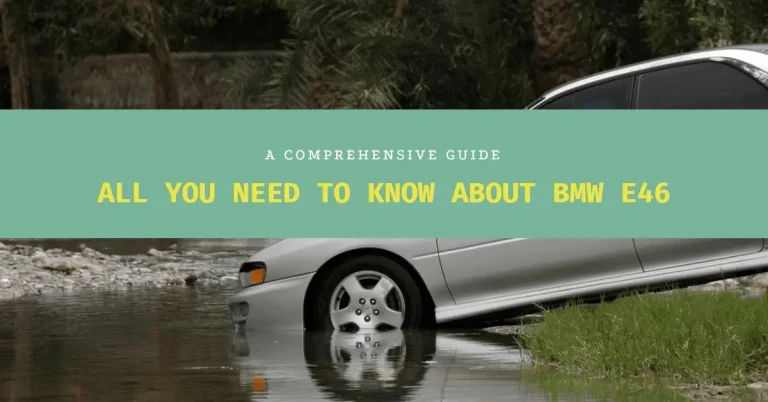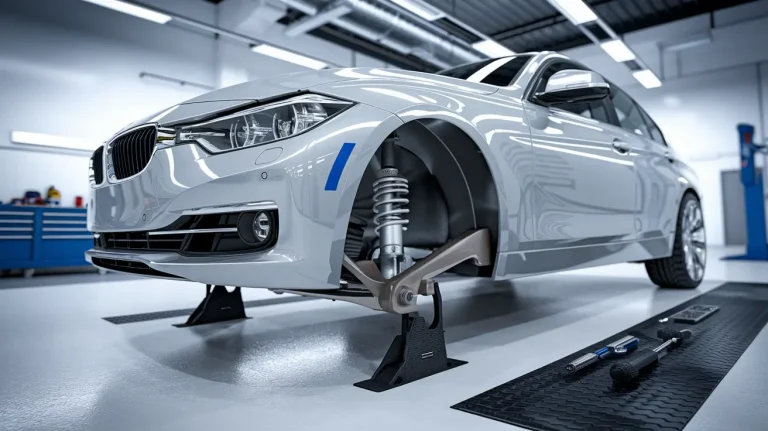Chassis Stabilization for BMW: Improving Handling and Performance
BMW is renowned around the world for engineering vehicles that deliver refined, dynamic driving experiences. Advanced chassis and stability control systems play a crucial role in providing BMW’s famous handling capabilities and agile responses.
BMW uses various technologies like Automatic Stability Control (ASC), Dynamic Stability Control (DSC), and xDrive all-wheel drive to stabilize the chassis and enhance overall vehicle dynamics. But what exactly are these systems, and how do they work to keep your BMW firmly planted through corners while also preventing skids?
In this comprehensive guide, we will cover everything you need to know about the chassis stabilization and safety systems found in BMW vehicles. You’ll learn:
- Key systems like ASC, DSC, and xDrive explained in detail
- How chassis stabilization works to detect and prevent loss of traction
- How these systems enhance safety and handling
- Available settings to customize system behavior
- Tips for proper operation and overriding stabilization
Understanding these important active systems will help you get the most out of your Ultimate Driving Machine. So let’s dive in and explore the advanced chassis stabilization systems that make BMWs so enjoyable to drive.
What is Chassis Stabilization?
Chassis stabilization refers to advanced electronic technologies that enhance a vehicle’s stability, traction control, and active safety. These systems use a variety of sensors around the vehicle to detect any loss of grip or control. They then automatically intervene with precise brake and powertrain inputs to keep the car stable and on course.
Stability control systems like those found in BMW models work by monitoring many factors like lateral forces, wheel slip, and yaw velocity. They process this data to determine if the car is understeering (front losing grip) or oversteering (rear slipping). By individually controlling the brakes at each wheel, as well as engine power delivery, the systems can counteract slides and bring the car back in line.
Chassis stabilization provides major advantages when it comes to safety, handling predictability, and driver confidence. The systems help maintain control in low traction conditions like snow, heavy rain, or gravel. They also mitigate more dangerous situations like fishtailing on the highway or hydroplaning through standing water.
During performance driving scenarios, chassis stabilization allows for much more agile maneuvers at the limit while reducing the risks of spinning out or crashing. Drivers can push harder into corners and accelerate earlier with the peace of mind that the systems will intervene if grip is exceeded. This allows BMWs to feel nimble and responsive, while preventing the tail from swinging out if the driver enters a turn too fast.
Now let’s take a closer look at the major chassis stabilization and safety systems found in BMW models over the years.
Key Chassis Stabilization Systems in BMW
BMW has developed and evolved its chassis control systems over decades. While the earliest models relied solely on a skilled driver’s inputs, today’s BMWs leverage advanced electronics and software to enhance stability and control. Here are some of the most important systems found in modern BMWs:
ASC – Automatic Stability Control
The Automatic Stability Control system was first introduced by BMW in 1996 on the Z3 roadster. ASC built on existing Anti-Lock Brakes by adding additional monitoring of traction at each wheel. Using wheel speed sensors, ASC could detect when a single wheel began to lose grip and spin faster than the others.
To prevent wheel spin, ASC automatically brakes the slipping wheel in a precise and modulated way to transfer torque to the other wheels. This helps maintain traction and prevent the driven wheels from getting stuck in situations like snow, gravel, or wet roads. ASC also interacts with the engine management system to temporarily cut throttle and reduce power delivery to the spinning wheel.
The major benefit of ASC was stabilizing the rear-drive BMW models prone to oversteer when accelerating out of corners. By braking the inner wheel, ASC helps counteract power-on oversteer for smoother corner exits. The system operates in the background and only intervenes when needed, allowing drivers to still powerslide if desired.
Over the years, BMW expanded Automatic Stability Control across all models leading up to the introduction of even more advanced systems.
DSC – Dynamic Stability Control
In the early 2000s, BMW introduced its more advanced Dynamic Stability Control system, which builds on the foundation of ASC. DSC leverages additional sensors and more powerful software to provide complete chassis stabilization and skid prevention.
While ASC mainly focused on traction at each wheel, DSC incorporates steering wheel angle sensors and lateral g sensors to detect the overall movement of the car. DSC constantly monitors for understeer and oversteer in real-time up to 10 times per second. Instead of just reacting to spinning wheels, DSC can anticipate skids and intervene even earlier before traction is fully lost.
The DSC system achieves this by coordinating precise brake inputs at each corner along with throttle modulation. Light brake pressure is applied to counteract oversteer or understeer smoothly, keeping the car balanced. DSC combines the functions of ASC traction control with overall vehicle dynamics stabilization, resulting in more refined and natural interventions.
DSC also incorporates other advanced functions:
- Cornering Brake Control (CBC) – Brakes the inside rear wheel when braking in turns to counteract forward pitch and improve stability
- Brake Drying – Periodically applies brakes to wipe away water buildup on rotors in wet conditions
- Brake Pre-loading – Primes brakes for quicker response time for maximum control
- Brake Fade Compensation – Adjusts braking pressure as pads wear to maintain consistency
- Electronic Brake-force Distribution (EBD) – Automatically distributes braking force between front and rear for optimized stopping power
DSC provides significant control and safety enhancements in a wide variety of conditions from everyday driving to track days. It remains the core chassis stabilization system in modern BMWs.
xDrive – BMW’s Intelligent AWD System
BMW’s advanced xDrive all-wheel drive system also plays a key role in chassis stabilization. xDrive was introduced in 2000 and can now be found on most BMW SUVs, crossovers, and sedans.
Unlike basic AWD systems, xDrive is an active system that intelligently varies torque distribution between the front and rear axles. Sensors monitor wheel slip, acceleration, steering angle, and other parameters to proactively shift power side-to-side based on available traction.
In normal driving, xDrive defaults to a rear-biased 40:60 torque split for the traditional BMW rear-wheel drive feel. But the instant any slip is detected, xDrive can transfer up to 100% of engine power to the front or rear as needed. This helps enhance grip in all conditions, especially rain, snow, and gravel.
xDrive is fully integrated with DSC, sharing sensor data and coordinating action. The combination of xDrive’s torque vectoring and DSC’s selective braking makes for a highly advanced AWD chassis stabilization setup. xDrive also reduces understeer for sharper turn-in while powering out of corners with confidence.
In performance models like BMW M vehicles, drivers can even customize xDrive settings. M xDrive allows adjusting the front-rear torque distribution or disabling AWD entirely for rear-wheel drifts. When combined with BMW’s Active M suspension, xDrive adapts in real-time for maximum grip and agility.
How BMW Chassis Stabilization Systems Work
Now that we’ve highlighted the major systems like ASC, DSC, and xDrive, how do they actually work to keep BMWs stable and under control?
BMW’s chassis and stability systems leverage a comprehensive array of sensors, advanced software, and precision electronic actuators. Here is an overview of how these components work together:
Sensors Monitor Vehicle Motion
- Wheel Speed Sensors – Measure the rotational speed of each wheel to detect changes indicating slip
- Steering Angle Sensors – Detect the driver’s steering wheel input direction and amount
- Lateral Acceleration Sensors – Measure cornering and centripetal forces on the vehicle body
- Longitudinal Acceleration – Detects front/rear pitch and acceleration
- Yaw Sensors – Monitor the vehicle’s rotation around the vertical axis to identify understeer vs oversteer
- Radar/Camera – Front sensors on newer models help detect lane departure or obstacles
Advanced Software Models Predict and Prevent Loss of Control
- Sensor data is fed into the DSC computer up to 10x per second
- Complex software models the car’s dynamic state using the readings
- Algorithms analyze this model to identify loss of traction or control
- If preset thresholds are exceeded, DSC determines which brakes and engine power to apply to counteract
Precise Braking and Throttle Intervention Stabilize Vehicle
- Individual hydraulic brakes are modulated to control each wheel with subtle corrections
- Engine throttle electronically adjusted to reduce or reapply torque when needed
- Combined subtle braking and throttle adjustments help maximize stability
This process happens continuously, automatically intervening only when chassis sensors detect a dangerous situation. This allows the systems to work predictively in the background without impairing everyday driving. But the technology springs into action imperceptibly when needed to aid control.
The Benefits of BMW Chassis Stabilization
BMW’s advanced stability control and all-wheel drive systems deliver important benefits when it comes to vehicle dynamics, safety, and performance:
Enhanced Driving Safety
- Helps maintain control in low traction conditions like snow, heavy rain, gravel roads
- Mitigates dangerous loss of control such as fishtailing or hydroplaning
- Braking enhancements improve stopping distance and consistency
Optimized Handling and Agility
- Keeps the vehicle balanced and planted through corners
- Allows aggressive maneuvers while reducing risk of spinning out
- Gives confidence to push the car to its limits with less practice
All-Weather Traction and Acceleration
- ASC, DSC, and xDrive optimize traction at all wheels in all conditions
- Power down more effectively on slippery surfaces
- Improves acceleration on loose surfaces like gravel or snow
Peace of Mind During Performance Driving
- Enjoy track days or mountain drives without the fear of crashing
- Learn the limits of your car as systems provide a safety net
- Turn off systems when desired for practicing control at the limits
Easier Emergency Maneuvers
- Suddenly swerving or hard braking is safer with DSC
- Maintain composure in emergency lane changes or obstacle avoidance
Reduced Driver Fatigue
- Stability systems reduce the intensity of focus needed to control the vehicle
- Experience less anxiety when driving in poor conditions
Customizing BMW Chassis Stabilization Settings
While BMW’s chassis control systems are fully automated to avoid interfering with everyday driving, many models allow some customization of the system settings.
Drivers can choose from different DSC modes to change the threshold at which the electronics will intervene. Here are some common settings:
DSC On
- This is the default setting that should be used for regular driving
- All stability systems are fully active and will intervene aggressively at the first sign of slip
- Provides the maximum safety net in all conditions
- Recommended for low-traction situations like snow or heavy rain
DSC Off / DSC Deactivated
- Fully disables all chassis stabilization systems including ASC and xDrive
- Allows the rear wheels to spin freely for drifting or burnouts
- DSC Off should only be used very briefly in safe scenarios
- Avoid abruptly switching DSC off at higher speeds
DSC MDM / M Dynamic Mode
- Raises thresholds so systems allow more wheel slip before intervening
- Lets the rear end slide somewhat before controllers kick in
- For track driving when wanting to experience oversteer
- Only recommended for experienced performance drivers
DSC SPORT
- Found on M models, allows additional slip and yaw before intervention
- Designed for more aggressive performance driving while retaining some safety
Different BMW models may use varied naming and settings for these driving modes. Owners should consult their manual for how to change DSC modes in their vehicle. In general, use the full DSC On mode for regular driving and only experiment with increased slip settings briefly on closed courses and under safe conditions.
Properly Operating BMW Stability Systems
While today’s BMW chassis systems are highly advanced, there are still some recommendations for getting the most from these technologies:
Avoid Suddenly Disabling DSC at Higher Speeds
- Turning off stability control while driving quickly can upset the car’s balance
- Before disabling, reduce speed to a safer level like 40 mph
Press and Hold DSC Button for 3+ Seconds When Disabling
- Quick taps will just cycle between modes, not fully off
- Hold the button down until DSC light illuminates
Reactivation and Default Settings
- DSC automatically reactivates each drive cycle
- Car reverts to full DSC On by default when started
- ASC cannot be fully disabled and always active
Use Reduced Settings Judiciously
- Only briefly use reduced DSC settings like DSC Off or MDM for safe practice
- Higher slip modes are intended for closed course use
- Never disable electronics on public roads
Understand System Limitations
- Electronics cannot repeal laws of physics
- DSC improves control but does not guarantee accident avoidance
- Requires prudent driving practices
Following these tips will keep you safe while allowing you to customize the dynamics for the occasional track day. With time and practice, BMW experts can learn to drift and perform at the handling limits with stability control dialed back. But street driving should always be done with the full protection of chassis control systems.
Conclusion: The Ultimate Driving with Stability
BMW’s advanced chassis stabilization and xDrive truly elevate its vehicles to the Ultimate Driving Machine. These systems play a key role in balancing agile, responsive handling with overall stability and control.
We covered the operation and benefits of major stability technologies like ASC, DSC, and xDrive. You learned how they constantly monitor sensors to detect loss of grip and intervene seamlessly with braking and engine adjustments. This subtle action in the background allows BMWs to stay planted and composed when driving near the limits.
While skilled drivers can control drifts and traction loss manually, few have the talent masterfully modulate every wheel at all times. So even pro drivers rely on BMW’s sophisticated systems for enhancing dynamics and safety. Stability control provides that extra edge, allowing amateurs and experts alike to extract the most from their BMW with confidence.
So understand and appreciate the engineering that goes into keeping your BMW glued to the road. With practice, you can safely explore the capabilities of these amazing performance machines. Just be sure to keep the electronics active when driving in the real world. Combined with focused driver training, BMW’s design and technology allows any enthusiast to become an Ultimate Driver.

